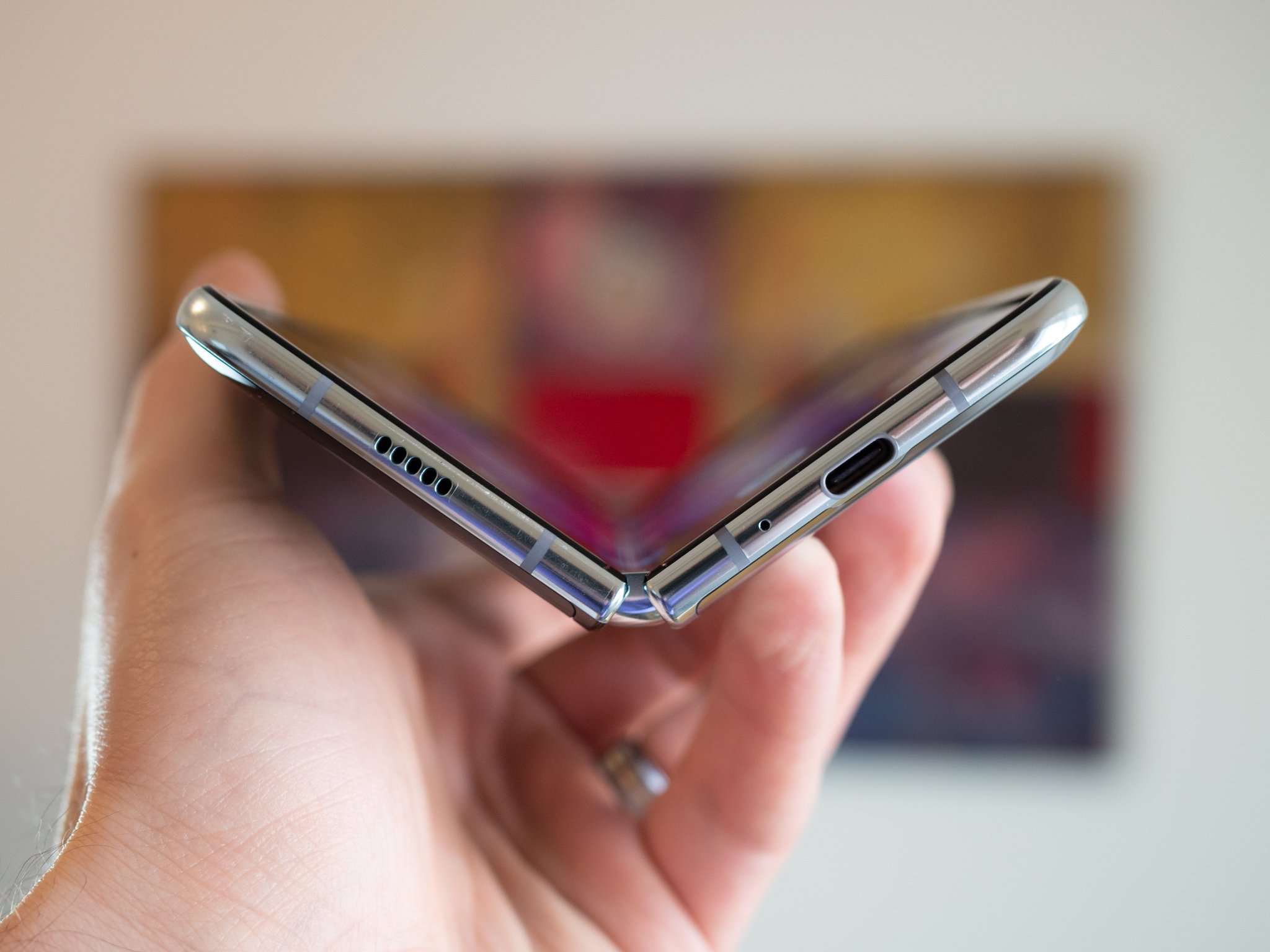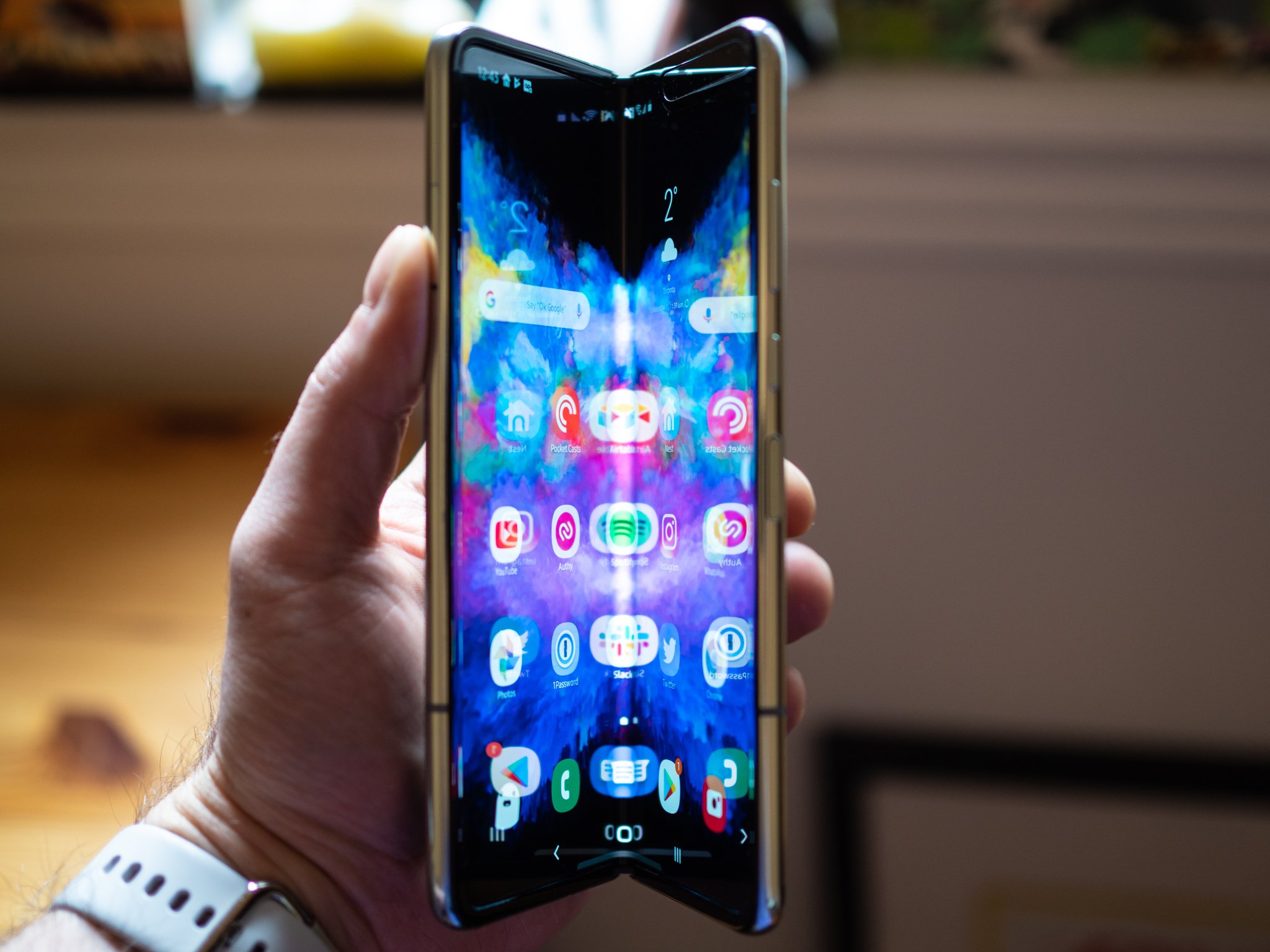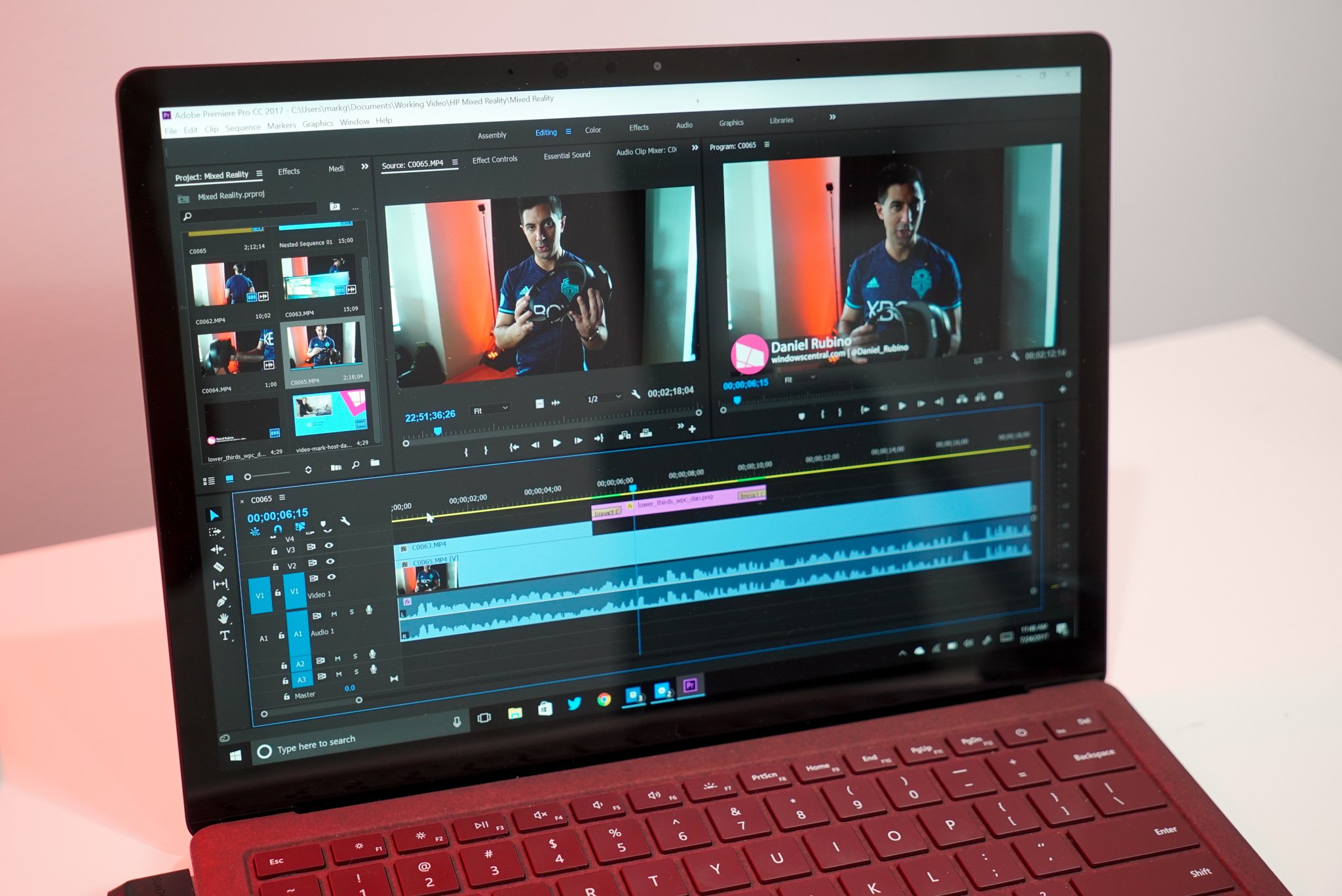Three things Apple could learn from Microsoft's Surface

But, they're also both often, if not best, certainly favorites in class, get a ton of media and enthusiast attention alike, and eat up a lot of mind share, if not market share.
And… they both target Apple in their advertising, of course, because despite Apple being a relatively small part of the market, targeting their own manufacturers, which are honestly their real competition, would be partnercide.
As a result, they always feel kind of held back, restricted, restrained… not allowed to really, fully strut their stuff. And their success to date, I think, bears that out. They just don't sell as well as they should. Because they're pretty fantastic tech. Tech that, by definition, is forced to think different. And tech that Apple could learn a thing or three from.
Including and especially this week's Microsoft event in New York City.
Foldables

I've said it innumerable times already: The history of human technology is the history of foldables. From books to wallets, flip phones to laptops. We just love taking big, wide things and folding them smaller if thicker to carry around.
Eventually, we'll go that way with at least some modern, mobile devices as well. Eventually.
Apple has never been one to rush to be "first" in an industry. They want to make sure that the product is perfect before it launches, and if it isn't, it gets scrapped like AirPower. Foldables just aren't mature enough yet for Apple.
Apple's reportedly been kicking around foldable projects since back in the days of iPhone 4 but hasn't found anything they'd be happy turning into a shipping product yet. For them, the technology just isn't mature enough yet.
iMore offers spot-on advice and guidance from our team of experts, with decades of Apple device experience to lean on. Learn more with iMore!
And that's ok. That's Apple. There were years of Windows Mobile and a decade of Tablet PC before we got the iPhone and iPad, and Microsoft Spot before we got the Apple Watch.
Apple wants to learn from this before they do that. But for us nerds, this is still super interesting.
Now, what Microsoft showed off weren't technically foldables. They were more like… hingeables?
Tech media is going to continue to misuse the term innovation to mean stunt or gimmick or dopamine hit to their increasingly bored and cynical brain stems, or in this case, experiment, and that's fine. That's the topic for a future video.
But, experiment is what these are. And that's also fine.

My colleague, Windows Central's Daniel Rubino, has a full video up on all this, so check that out, but here's my scorching hot take.
They're not single-screen devices like Samsung's just-launched Galaxy Fold or Huawei's still-to-come Mate X. They're dual-screen devices. Two identically sized displays hinged together.
We've seen the concept before but this implementation is super slick, with all the hardware panache we've come to expect from Microsoft's Surface line.
The Neo, the bigger of the two, has dual 9-inch displays and runs Windows 10X, a new version of Windows based on the same Windows Core… core that also runs HoloLens 2 and Xbox One.
Since the hinge bends all the way around, you can open it partially to use it like AD&D Player's Handbook-sized tome, lay it out flat like a Monopoly board for full-sized tablet fun, fold all the way back, like a paperback, for more one-handed, half-sized tablet action, or snap it shut to keep those two screens safe while not in use.
You can also prop it up like a laptop and even flip around this really cool little hardware keyboard and mount it low to use the remaining screen like a giant emoji-strewn Touch Bar, or higher up, to enable a faux touchpad.
Two hinged screens aren't as awesome looking, and certainly, aren't as swipe-across friendly as true foldable screens… but they aren't as fragile yet either. The true end game is true foldables with truly touch screen tech and full-on haptic control simulation, so you don't need accessories. The screen can just feel like keys or dials or sliders or whatever control surface you need or want.
But we're still a long way from that, and this is a differently compromised idea from the Galaxy Fold to get us one differently diagonal step there.
The Duo is a smaller version of the Neo, with twin 5.6-inch displays. Microsoft is calling it a phone but, honestly, given the aspect ratio looks far more like those old Android tablets that had phone apps, which is probably why they didn't show too many shots of people holding them up to their heads.
Which, you know, in the era of AirPods and Surface Buds, is totally fine with me. I'd love it if iPads could take and make phone calls directly.
Now, the bigger news about the smaller hingeable is that it runs not Windows 10X but Android…
Yeah. Android.
People will try to frame this like, if you know Satya Nadella then you saw this coming. But if you know Bill Gates and Steve Balmer, then you know they never saw this coming.
They never expected all of us to be running around with little Nix boxes in our pockets, surfing the web on KHTML-based browsers.
The power of software. A PC in every home. Windows everywhere. That was their future.

And, I totally get that it's a pragmatic choice and probably a smart one. If you can't be Apple or Google you better damn well be WeChat.
But I also can't help but feel that we're all a little lesser for it. A world where Microsoft could have scaled Windows Core down to phones, would be a world with one more choice than Apple or Google.
But Android is so ubiquitous and so free, it's going to take a company with as much gumption as Google to do to them what they did to Windows. And likely only when the next paradigm shift occurs.
So, in my mind palace, I'm going to pretend this is just a stop-gap. A way to buy time so AzureOS, a fully cloud-centric, AI-powered operating system can ramp up and start being deployed across multi-form endpoints of all shapes and sizes.
Yup, that's what I'm going to pretend. Even while I try to figure out how Microsoft is going to square their commitments to privacy with Google's all-consuming operating system running root level on their devices.
Now, neither the Neo nor the Duo are coming to market until the end of 2020 at the earliest. More than a year from now. For the Neo, that's easy to understand.
Microsoft is showing it off now because it's really less product and more ecosystem jump-starter. Microsoft hopes, I think, all their device partners will try to meet or beat them to market so there will be a critical enough hardware mass to compel software support from developers.
And, I mean… I hope?
Windows Phone was terrific and inspired both Android and iOS towards more minimal design. But it never got developer support and so Microsoft MDK'd it.
Likewise, Google, even with the strongest of strong-arms at times, hasn't been able to get Android developers to make enough tablet-optimized apps to make Android tablets a thing. And they've MDK'd their own Pixel Slate line.
So, all the capacitive input digits crossed.
The Duo delay is harder to understand, though. We've seen dual-screen Android devices on the market already. So, why isn't the Duo launching this holiday season instead of next?
It's hot and new right now, but a year from now, that ID and implementation may not hold up as well. Unless, of course, there's way more to its story than Microsoft has let on so far.
And, hey, maybe the combination of foldables and hingebles will prove popular and compelling enough to get developers all up on their jammy. Yeah, I said jammy.
But, we've all gotten our hopes up enough here that it's totally fair to say no one should expect it until everyone sees it.
Even if some of us would really love an Apple Book — an iPad mini that would fold out into an iPad… and an iPad that would fold out into a full-sized Pro.
ARM & AMD

Now, there were some actual shipping Surface products announced this week as well, and some of them were kinda all shades of audacious in their own rights.
Again, Daniel Rubino and Windows Central are all over this, but here's the scorching gist:
The Surface Pro X is like the 2018 iPad Pro redesign for the Surface line. War on bezels, check. USB C, check. Actually, check check because there's two of them. That's something I'd love on an iPad Pro.
And the Surface Pro X runs Windows 10… no, not X, because there's not a company in tech that can seemingly resist making that letter numeral non-confusing… but Windows 10 for ARM.
That's right. No Intel inside. No sticker on deck. None. Instead, you have a Microsoft SQ1 made in partnership with Qualcomm, with Microsoft's own AI engine. Maybe something akin to the 8cx+, with Kyro just slightly faster than the 855+, and DirectX direct-injected? I dunno. Hopefully time will tell.
I would love the idea of a MacBook running something A13X-like, not just for power efficiency, but for flat out power in that kind of profile.
Microsoft's device partners haven't exactly raced to get Windows on Arm products of their own onto the shelves, so this again might be as much prod as product.
Either way, it just makes me salivate at the idea of a new MacBook running something A13X-like, and like yesterday. Not just for power efficiency either. At this point, just for flat out power in that kind of profile.
The other big silicon news was on the opposite end of the Surface Spectrum: The new 15-inch Surface Laptop 3 is also bereft of Intel and, instead, is packing AMD.
Now, I'm far more excited about AMD costs and core-counts on desktop than I am mobile, but…. It's still great to see them making inroads into platform companies.
We'll have to wait and see how they perform, but while we do, I'll just be over here all low key dreaming about a ThreadRipper iMac Pro.
Repairability

There were a lot of thoughtful, delightful little design touches across the Surface hardware line, including how the pen is hidden away inside the keyboard.
But the biggest and best was internal access. I straight-up kind of loved up the way Panos Panay just ripped the keyboard off the Surface Laptop to show that it was more repairable, more upgradeable, than Surfaces past.
Now, everything is a compromise. Unibodies provide incredible strength and structural support, but they make replacements more all-encompassing and expensive. Pop-offs, well, they can pop off just like snaps can snap off. But they make it much easier to get into the guts of the machine and, theoretically, more affordable to repair.
Having the ability to upgrade, even get upgraded, a storage module or memory module wouldn't just be great for customers, it would be great for sustainability efforts as well.
I say theoretically only because there are reports that the new Surface Laptop is really only easier for Microsoft to get into and repair or upgrade for you with warranty intact. Which is still better if not the best. And DIYers are super resourceful. But, it's such early days that it's hard to tell how exactly, and legally that will play out. Besides, I'm an optimist.
Either way, I love the idea. There'd have to be some tradeoffs in terms of sleekness and solidity, of course, but having the ability to upgrade, even get upgraded, a storage module or memory module, even a communications module, wouldn't just be great for customers, it's be great for sustainability efforts as well.
I just seriously upgraded my camera for these videos and I want to start shooting in RAW, and the idea of getting my MacBook Pro drive upgraded from 2TB to 4TB is… just… give it to me now.
So, hopefully, this isn't just a first step but a first shove in that direction for everyone.

Rene Ritchie is one of the most respected Apple analysts in the business, reaching a combined audience of over 40 million readers a month. His YouTube channel, Vector, has over 90 thousand subscribers and 14 million views and his podcasts, including Debug, have been downloaded over 20 million times. He also regularly co-hosts MacBreak Weekly for the TWiT network and co-hosted CES Live! and Talk Mobile. Based in Montreal, Rene is a former director of product marketing, web developer, and graphic designer. He's authored several books and appeared on numerous television and radio segments to discuss Apple and the technology industry. When not working, he likes to cook, grapple, and spend time with his friends and family.
